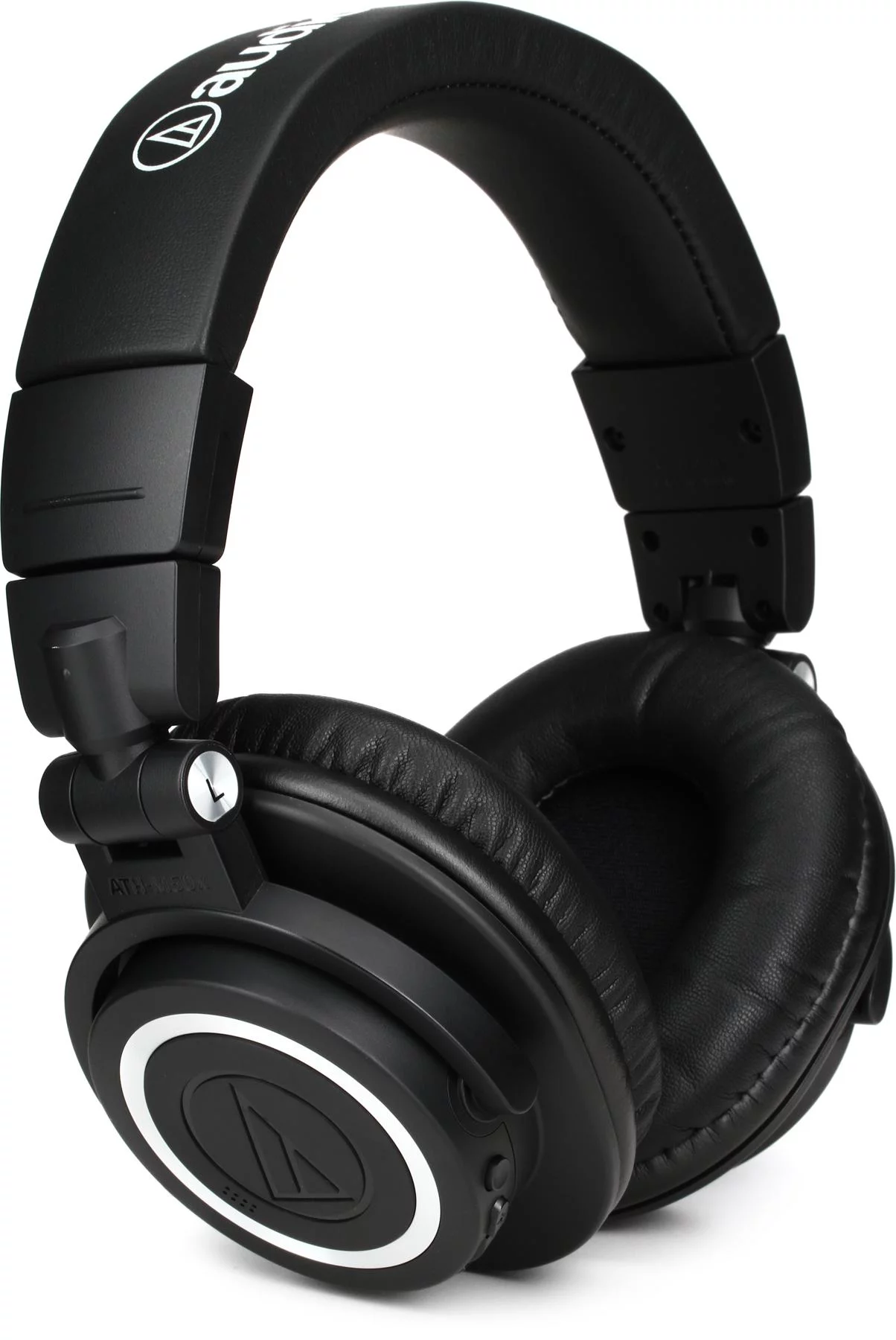Whether you’re brand-new to electronic music production, or you’re starting again after a break, you need the right set-up if you’re going to accomplish amazing things.
Electronic music production requires a lot of passion, creativity, and heart. However, you also need the right technology to transform your ideas into something real.
Today, we’re going to introduce you to music production for the beginner’s basic set-up that every musician needs for excellent music production.
Once you’ve got these crucial components down, there’s nothing to stop you from evolving as you go.
Music Production for Beginners: The four essentials
Your experience with music production will evolve as you spend more time honing your skills and exploring new ideas.
There are plenty of producers out there with complex technology collections, or various pieces of software to help them accomplish their goals.
However, the truth is that when you’re just getting started, all you really need is a quiet room and four fundamental essentials.
Ideally, you’ll want a room where you can record and create without any distractions from the outside world. In a best-case scenario, the room would have acoustic treatment to remove reverberation, but that’s not always possible for beginners.
Once you’ve got your environment ready, you can move on to the essential technology.
Just like a song has key components like instruments, vocals, and rhythm, your music production environment will have various essential elements too, these are:
- A computer: Where you access the software you need to mix your music and store your creations either in the cloud or on a hard drive.
- DAW: Your Digital Audio Workstation is where you experiment with tracks and sounds to create the music that you want to share with the world.
- Audio interface: This is where you can manipulate your tracks and expand the sonic capabilities of your computer with microphones and instruments.
- Monitors and headphones: These are the tools you use to listen to your music and make sure everything comes together perfectly.
Choosing your dance Music Production computer
In today’s digital world, the computer is the heart of the music production journey. This is where you’re going to create and store your music, so you need to make sure that you have something you can rely on. Initially, a cheap laptop will usually be more than enough.
Most of the modern laptops on the market have enough RAM and the right processor to handle music software.
As your knowledge of electronic music production grows, you can eventually upgrade to something more comprehensive. Get a new laptop for music production if you’re planning on recording and making music on the go.
You can usually use the same laptop that you produce music on for DJ sets and performances.
If you want something for a stationed recording studio, then you might need a PC. Remember that a PC isn’t portable, but it comes with more firepower to help you create larger files.
Should I be learning Music Production on a MAC or PC? You shouldn’t need to worry too much about choosing between a Mac or a PC.
Both of these tools are excellent today, and many of them have support for different kinds of leading mixing software. Go for the tech you feel more comfortable with and look after it.
Conducting regular health checks for your computer is essential.
If you need a hand choosing which to go for, see our picks for below for both macOS and Windows, as well as desktop and laptop.
We recommend these computers
macOS Desktop

Apple iMac 27″
CPU: Intel i5 | Graphics: AMD Radeon Pro 570x | RAM: 16GB (stock) | Storage: 1TB SSD
macOS Laptop
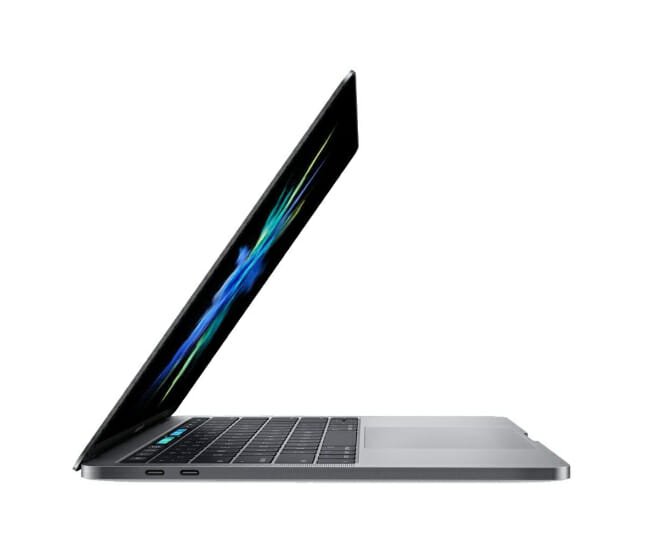
Apple MacBook Pro 2019
CPU: Quad-core i7 | Graphics: Intel Iris Plus 655 | RAM: 16GB | Storage: 512GB SSD
Windows Desktop
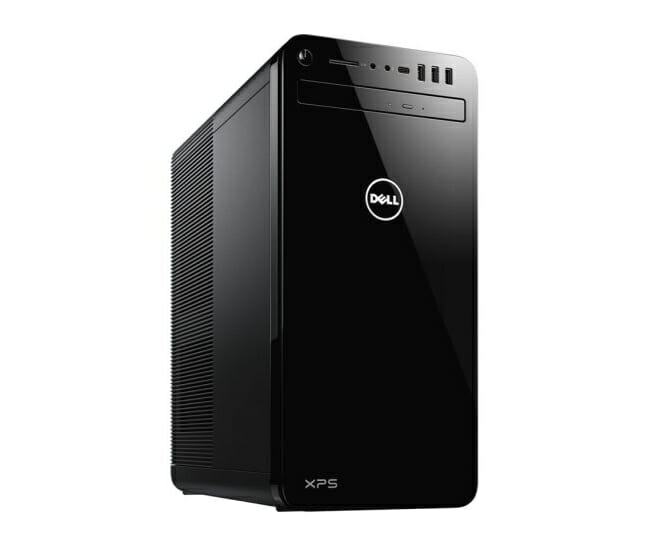
Dell XPS 8930
CPU: Intel i7 | Graphics: Nvidia GTX 1050Ti 4GB | RAM: 16GB | Storage: 512GB SSD
Windows Laptop

Dell XPS 7930 13.3″ Laptop
CPU: 10th Gen i7 | Graphics: Intel UHD 620 | RAM: 16GB | Storage: 1TB SSD
Finding the right computer for Electronic Music Production
Once you know what operating system you want, and whether it’s best to stick with a laptop or a desktop device, you’ll need to make sure that you have the right technology built into your new workstation.
Remember, the capacity of the workload you can handle is determined by:
- CPU: A CPU with a higher number of cores will deal better with more processes that operate simultaneously. If you want to record with various plugins and large track counts, then you’ll need at least a quad-core processor.
- RAM: RAM can limit your music production potential if you don’t have enough. You need to make sure that you have plenty of RAM, around 64-bit if possible. This will help you to run multiple tracks and plugins at the same time. You’ll need at least 8GB of RAM to get anything done, but the higher you can go, the better.
- Hard Drive: Just like a bigger CPU and RAM will assist with your electronic music production, a larger amount of hard-drive capacity will be essential too. If you can, try to record with an internal hard drive. This will allow you to create music faster. At the same time, don’t forget to back up your recordings as often as possible. There’s always a risk that something will go wrong with your computer, and you don’t want to lose your hard work.
Music Production software for beginners: Choosing your DAW
Once you’ve got your computer decision down, the next thing you need to think about is which Digital Audio Workstation you’re going to use. A Digital Audio Workstation is the software you use to record and manipulate your music.
Choosing the best music production software for beginners can be a little tricky at times. Sometimes, it’s helpful to test out the functionality of tools by using free versions that exist around the web.
If you have a mac, you might even want to use GarageBand, because it’s there already.
Every DJ and music producer has their own opinions when it comes to DAW software. Some people prefer things like Ableton live, while others prefer Logic, and so on.
Here are some of the most popular “industry-standard” options for DAW technology:
Ableton Live

Available for both Mac and PC, Ableton Live is a powerful DAW that helps you to create amazing live music for performances. DJs often make the most of the session view in this technology to launch and manage enter audio experiences with ease.
You can find out more about Ableton in our Ableton vs Logic Pro article here.
Ableton Live 10 is available at three price points Intro, Standard, and Suite. You can find the best prices by clicking on the buttons below.



Logic Pro X
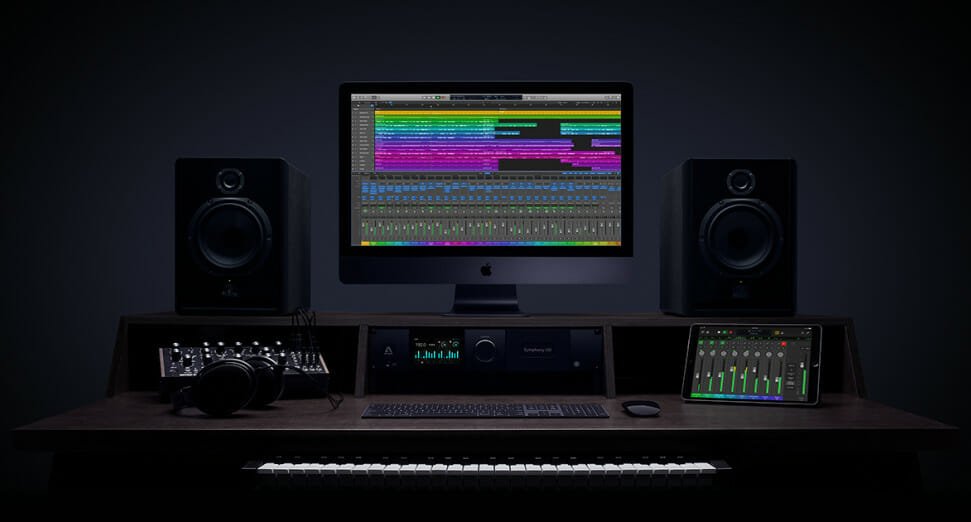
This software is only available for Mac. Think of it as the upgraded version of Garageband, with more recording technology, mixing, and mastering components.
Logic has fantastic editing capabilities for MIDI solutions, and it’s useful in theatre production when combined with the Mainstage program.
Click here to purchase from the App store.
Cubase Pro

Another tool that’s available for both Mac and PC, Cubase is a fantastic tool for beginners, because it’s straightforward to get started. There are a huge amount of instruments and sounds to choose from, so creating your initial sets couldn’t be easier.
Click here to buy for the best price.
FL Studio
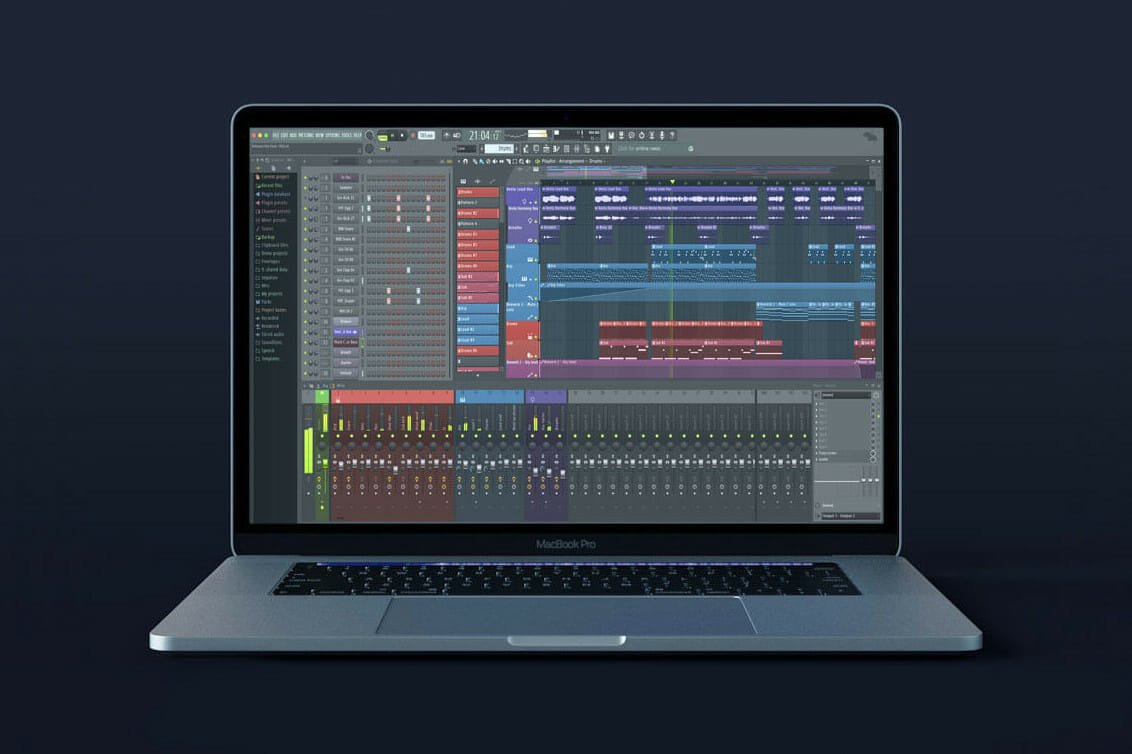
This DAW works for both Mac and Windows computers. The complete software solution has everything you need to mix amazing music and sequence your sounds into something special. It’s great for beginners and includes plenty of editing options.
Click here to buy and download instantly.
Remember, once you choose the DAW you want to use, you need to commit some time and effort to learn how to master it.
Although the options we mentioned above are often quite good for beginners, all software requires some practice at first.
The good news is that many DAWs today come with helpful tips and hints built into their “Help” tabs.
However, if you do have any problems, you should be able to check out some tutorials by heading online.
Music Production equipment for beginners
The pro audio industry is vast and there are thousands of products to choose from. However, we are here to help.
We have reviewed many audio interfaces over the years and believe any one of these will be the best to get you started, so let’s have a look.
Choosing your audio interface
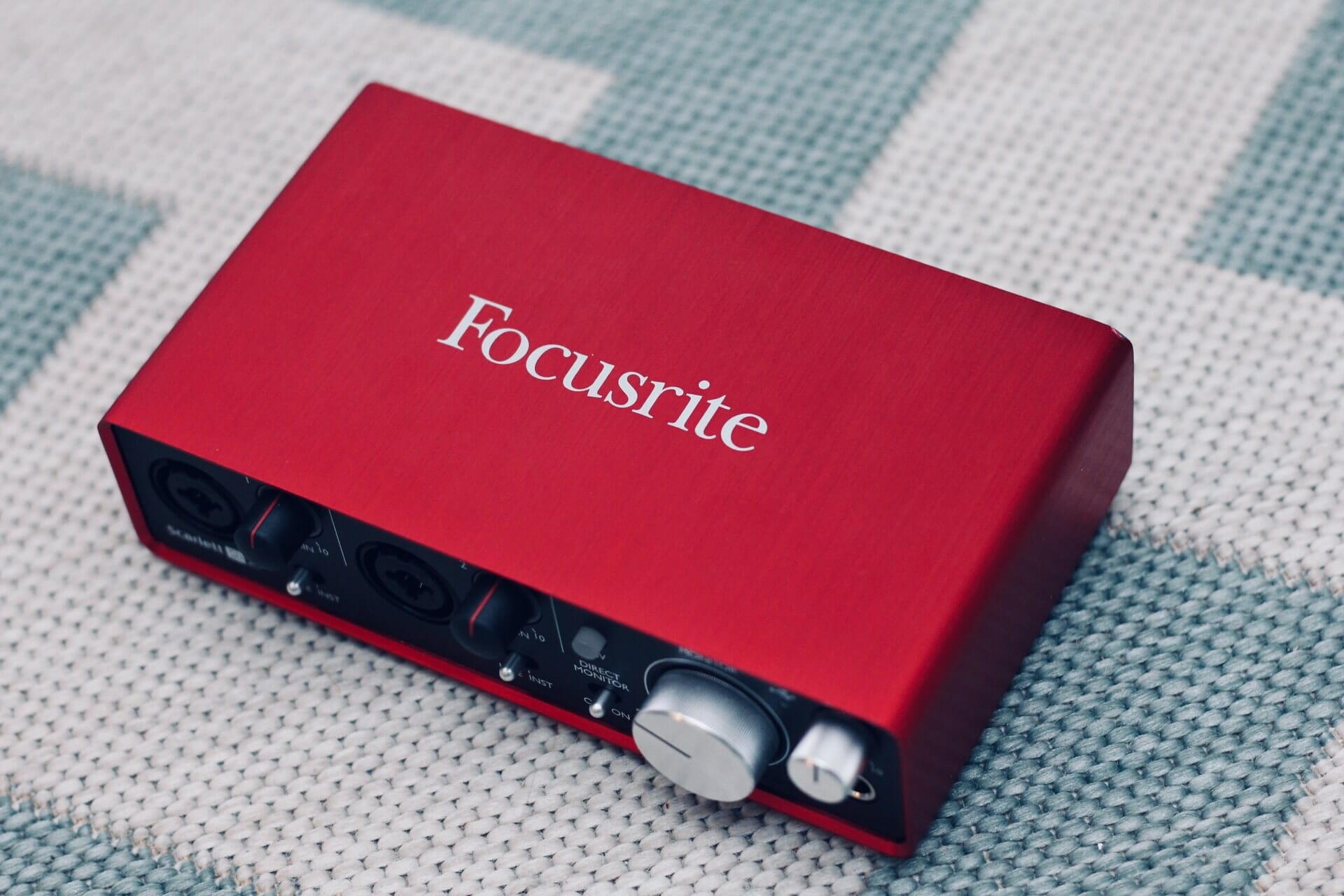
With your computer and DAW ready, the next stage is picking your audio interface. This is the solution that will help you to unlock the best quality of audio from your computer.
You’ll be able to connect various components to your music session with an audio interface. For instance, you can attach a microphone for recording voice or add in keyboards and Synth technology.
While your computer might come with a basic microphone input port, the chances are that you won’t be able to access the right quality of sound this way.
The built-in sound cards in a computer rarely provide the right control over your audio signal.
On the other hand, an audio interface provides you with the ability to record and use high-quality monitors, and headphones too.
Even when you only have a limited budget for your electronic music production set-up, it’s worth noting that you’re likely to spend quite a bit on a decent unit here.
There are a lot of great options out there, but you’ll need to splash out over a hundred dollars, to begin with.
Remember that you need to choose something that can work well with your computer for input and output.
Before you go shopping, take the time to figure out what kind of inputs you need and how many you’re looking for.
For instance, if you want to record a guitar, then you would need a two-channel audio interface to import that audio into your digital audio workstation.
The technology that you need with your audio interface will depend on what you want to accomplish. Just like any other technology, some audio interfaces work better for certain tasks than others.
For instance, many experts recommend Native Instruments and the Komplete Audio system for singers and songwriters.
However, this won’t be the right option for everyone.
Generally, the price that you’ll pay for your audio interface will increase depending on how many sounds you want to record and manage at once.
We recommend these audio interfaces
Focusrite Scarlett 2i2

If you’re just starting out and need something that is versatile, robust, and easy to use then we strongly suggest you get the Focusrite Scarlett 2i2 Audio Interface.
This little unit packs a huge amount of punch and value with a 2-in-2-out channel configuration, warm pre-amps, and a plug ‘n’ play that is so simple even my mother can get it working.
Pros
- Great preamps; Focusrite manufactures one of the best preamps in the business, and you can’t go wrong with this one
- Allows you to record in 24-bit resolution and a sample rate of 96 kHz, so you can ensure the highest quality recordings
- Very light on CPU resources even at low buffer sizes
- Features direct monitoring that bypasses the computer so you can directly hear your vocals in real time
- Excellent value for money
Cons
- Powered through USB — could be problematic if your laptop only has one USB slot
- No MIDI input or outputs
- Not ideal for recording multiple vocals/instruments at the same time
Choosing the correct monitors and headphones
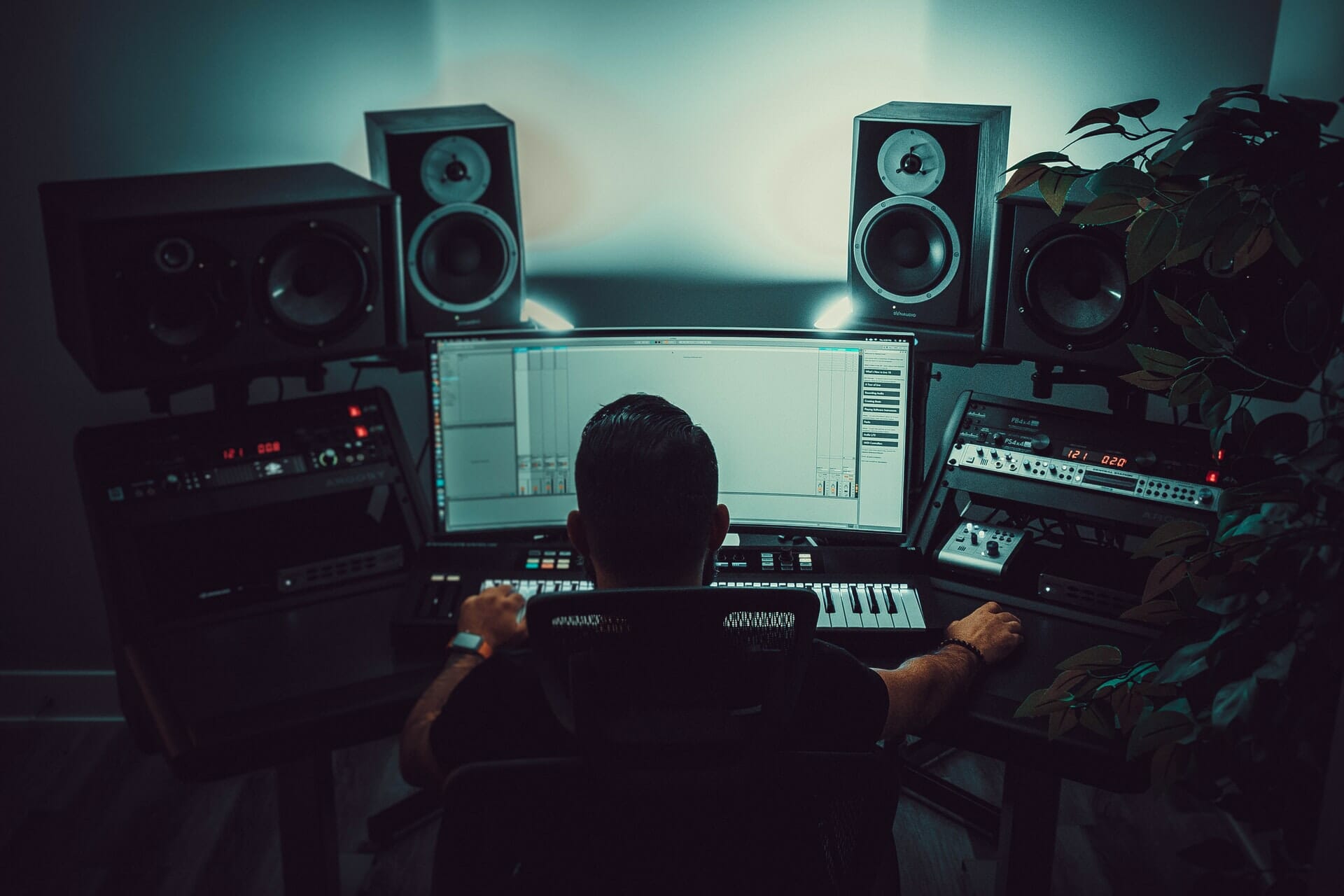
Now we come to the last but equally crucial piece of the production strategy. Studio monitors/Speakers and headphones are essential to your dance music production.
While monitors give you a good overview of your mix and how everything works together in a performance environment, headphones are better for honing in.
If you want to tune into the specific elements of your mix, you need a set of headphones.
Monitors for DJ mixing aren’t the same as the computer monitors that show your picture. These tools are speakers that help to represent a recorded sound as accurately and cleanly as possible so that you can check out the full depth of the mix.
If you’ve never heard your music through a good set of studio monitors before, you could find it surprising how much detail these tools can deliver.
You can also get a really good pair of monitors for a decent price in many cases.
Monitors are perfect for discovering the full feel of the mix and imagining what it would be like to deliver that music to a crowd in a performance environment. Regardless of what kind of monitors you get, it’s important to think about things like size and accessories.
For instance, you might need monitor isolation pads so your monitor’s sound quality stays clear and crisp. It’s easy for the surface a monitor is on to hurt the sound.
Although consumers and standard speakers and headphones are okay, they often try to make music sound better by adding more bass and other elements.
With studio mixing, you need to know the reality of what your music sounds like.
While monitors give you the full scope, headphones are great for bringing your focus to different elements of your mix. You can use your headphones to notice problems that might not be as obvious over a set of speakers.
The ideal set of headphones will give you the power to pick out individual lines from instruments and pay attention to specific notes.
The good news for today’s DJs is that there is a huge selection of both monitors and headphones out there to suit everyone.
There’s also a wide price range to choose from too. Ideally, you’ll want to test the technology yourself with a track that you feel confident with. This will help you to determine how effective the technology is.
Check out our 12 Best DJ Headphones review to see what will best suit your needs.
Studio Monitors we recommend
Yamaha HS5 Active Studio Monitors (matched pair)

If you’re looking for the most bang-for-your-buck as possible, then look no further than the Yamaha HS5 active studio monitors.
These little bad boys pack a lot of power for a relatively small unit. You have enough mid-range and low-end to get you started and plenty of high-end to hear every detail within a track. At this price point, you can’t get much better… in fact, you absolutely can’t.
Pros
- Excellent 5-inch cone woofer
- Broad frequency response
- Excellent bi-amp system
- Powerful room adjustment features
Cons
- Low-end could be better (but this isn’t factoring in the price)
Headphones we recommend…
Audio-Technica ATH-M50x

- Excellent at blocking out excess sound
- Accurate response level
- Even mid-range performance
- Bluetooth for fewer wires
- Not the best for bass
Final thoughts on Music Production for beginners

Getting involved with electronic music production is an exciting experience. This is a chance for you to bring your own music to life and explore your creativity.
Although there are people with complex electronic music production studios out there, it’s worth noting that you don’t need to spend a fortune to get started.
With the four elements above, you’ll have everything you need to launch into the world of electronic music production.
As you learn and adapt to new strategies, you can begin to add new elements to your production set-ups, such as advanced microphones, drum machines, and new software.
Start simple and work your way up, you’ll be producing amazing electronic music in no time.





